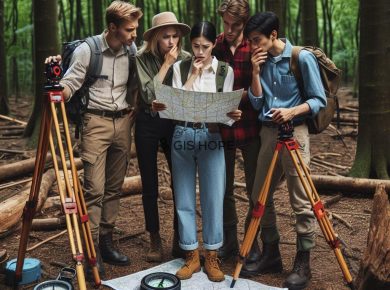The world of Geographic Information Systems (GIS) is both vast and intriguing, offering a plethora of possibilities for those willing to embark on the journey of spatial exploration. For beginners, navigating through the complexities of GIS technology can feel like embarking on an adventure into the unknown. In this essay, we delve into the experiences of GIS novices, exploring the challenges, discoveries, and triumphs encountered as they navigate their way through the fascinating realm of spatial data analysis and mapping.
The Thrill of Discovery
For many newcomers to GIS, the initial foray into spatial data analysis is met with a sense of excitement and curiosity. Armed with newfound knowledge and tools, beginners eagerly embark on their exploration of geographic phenomena, uncovering hidden patterns, relationships, and insights within spatial datasets. Each discovery, whether it be a spatial hotspot, a correlation between variables, or a unique geographic feature, fuels the sense of wonder and intrigue that accompanies the journey into GIS.
Navigating the Learning Curve
However, the path to GIS proficiency is not without its challenges. Beginners often encounter a steep learning curve as they grapple with unfamiliar concepts, terminology, and software interfaces. From understanding coordinate systems and projections to mastering geoprocessing tools and spatial analysis techniques, the journey towards GIS competency requires dedication, patience, and perseverance. Despite the initial hurdles, each obstacle overcome brings newcomers one step closer to unlocking the full potential of GIS technology.
Overcoming Challenges
Along the way, GIS novices encounter various challenges that test their problem-solving skills and resilience. Whether it’s troubleshooting a data import error, deciphering cryptic error messages, or wrestling with a stubborn geoprocessing task, each challenge presents an opportunity for growth and learning. Through experimentation, resourcefulness, and seeking guidance from online forums and communities, beginners navigate through obstacles, gaining valuable experience and confidence in their GIS journey.
Celebrating Milestones
As GIS beginners progress in their learning journey, they celebrate milestones both big and small. From successfully creating their first map to conducting their first spatial analysis, each achievement marks a significant milestone in their development as spatial analysts. With each accomplishment, beginners gain a deeper appreciation for the power and versatility of GIS technology, fueling their passion for exploration and discovery in the world of spatial data.
Embracing Continuous Learning
In the ever-evolving landscape of GIS, the journey of learning is ongoing. Beginners quickly realize that there is always more to discover, more skills to master, and more applications to explore. As they continue to hone their expertise through hands-on practice, formal training, and ongoing professional development, GIS novices embrace the ethos of lifelong learning, driven by their insatiable curiosity and passion for spatial exploration.
In conclusion, the journey of GIS beginners is an adventure filled with excitement, challenges, and discovery. From the thrill of uncovering hidden patterns to the satisfaction of overcoming obstacles, newcomers to GIS navigate through a landscape of learning with determination and enthusiasm. As they progress along their journey, GIS novices celebrate milestones, embrace challenges, and continue to expand their knowledge and skills in the dynamic world of spatial data analysis and mapping.
References
- Longley, P. A., et al. (2015). “Geographic Information Science and Systems.” John Wiley & Sons.
- Ormsby, T., et al. (2018). “Getting to Know ArcGIS Desktop.” Esri Press.
- Bolstad, P. (2016). “GIS Fundamentals: A First Text on Geographic Information Systems.” Eider Press.
- Paudel, K. P., et al. (2021). “Challenges and Opportunities of Geographic Information Systems in Agricultural Extension Services: A Review.” Agronomy.





